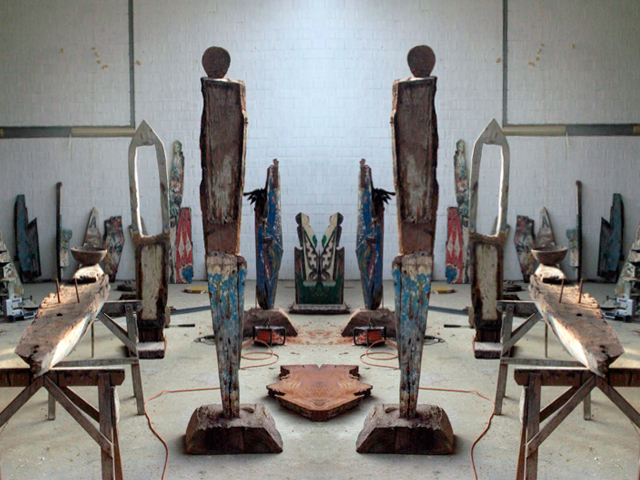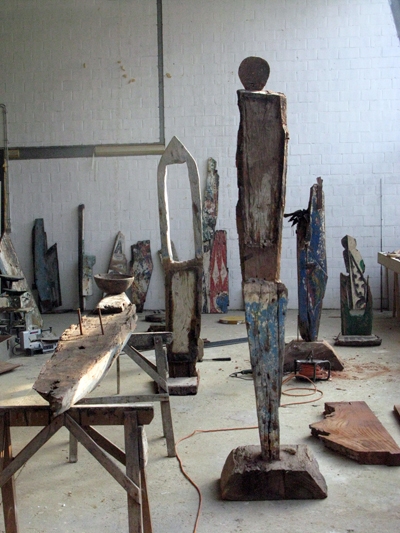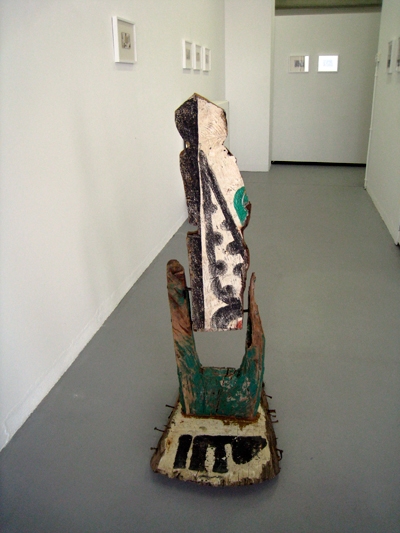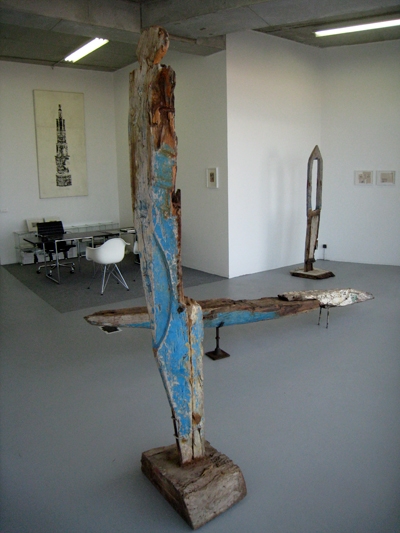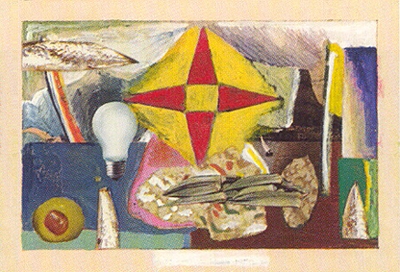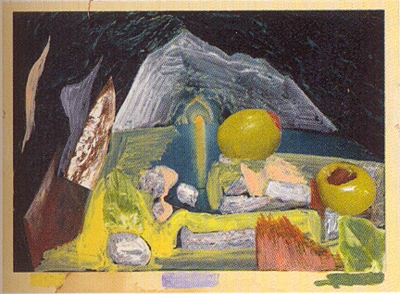Philip Aguirre
Gaalgui
30.05.2009 - 30.07.2009
Zeedijk 635 - Knokke
Philip Aguirre made a large vertical wooden sculpture called Gaalgui in Senegal. Gaalgui means canoe in Wolof, one of the languages spoken in Senegal. The Gaalgui is the fishing boat that is used for traditional fishing but has also been used in recent years for the illegal migration to the Canary Islands. Aguirre made the sculpture together with local craftsmen and wants to tell the story of these fishermen, shipbuilders and young migrants. Fascinated by the shapes and colors of the canoes he assembles the wreckage of these boats. Here we find the sculptor 'pur sang' at work, playful, uninhibited and inspired by the shapes and colors.
Philip Aguirre y Otegui (°1961) lives and works in Antwerp. He studied sculpture at the Royal Academy in Antwerp and is a teacher at the Sint Lukas art school in Brussels. His sculptures are usually made from traditional materials such as bronze, terracotta , wood, clay or plaster and always portray a deep human tragedy. Current political issues, like the position of the individual in the context of migration, are an inspiration to the artist. Examples are the works ‘Matrasdrager’ (Biac, Zaventem), ‘Waterdrager’ (University of Antwerp), 'De man tegen de muur’ (Dexia collection, Brussels), ‘De man met de toeter’ (Kaprijke), ‘Speakercorner’ (Muzee, Ostend).
In 2008, the Mercator Foundation published the monograph ‘Sculptures’ on the work of Aguirre. Following this publication, the Middelheim Museum in Antwerp organized an exhibition in the Braem Pavilion.
Philip Aguirre y Otegui (°1961) lives and works in Antwerp. He studied sculpture at the Royal Academy in Antwerp and is a teacher at the Sint Lukas art school in Brussels. His sculptures are usually made from traditional materials such as bronze, terracotta , wood, clay or plaster and always portray a deep human tragedy. Current political issues, like the position of the individual in the context of migration, are an inspiration to the artist. Examples are the works ‘Matrasdrager’ (Biac, Zaventem), ‘Waterdrager’ (University of Antwerp), 'De man tegen de muur’ (Dexia collection, Brussels), ‘De man met de toeter’ (Kaprijke), ‘Speakercorner’ (Muzee, Ostend).
In 2008, the Mercator Foundation published the monograph ‘Sculptures’ on the work of Aguirre. Following this publication, the Middelheim Museum in Antwerp organized an exhibition in the Braem Pavilion.
